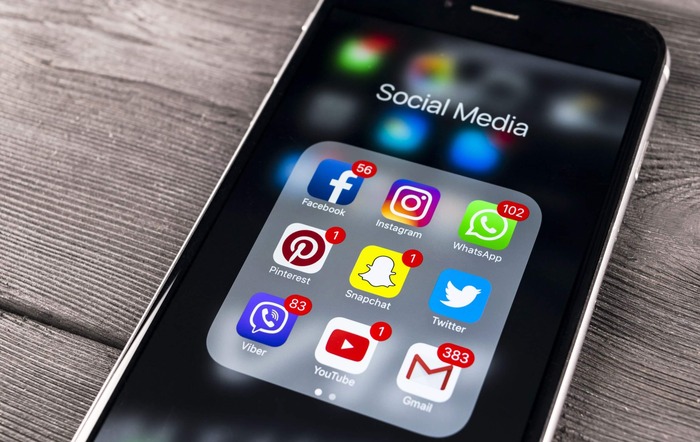Mobile applications have seamlessly integrated into the fabric of our daily routines, becoming indispensable tools that enhance various aspects of our lives. From communication and productivity to entertainment and beyond, the role of mobile apps is pervasive and transformative. Let’s explore how these applications have become integral to our existence.
Instant Connectivity:
Mobile messaging apps have revolutionized communication, enabling instant messaging, voice calls, and video chats. Apps like WhatsApp, Messenger, and Telegram have made it effortless to stay connected with friends and family globally.
Social Interaction:
Social media apps facilitate continuous social interaction. Platforms such as Facebook, Instagram, and Twitter provide spaces for sharing updates, photos, and thoughts, fostering a sense of community and connectivity.
From enhancing productivity to providing entertainment, the types of mobile applications available are diverse and cater to various needs:
1. Social Networking Apps
Purpose: Facilitating communication and social interaction.
Social networking apps are designed to connect people globally, enabling them to share updates, photos, and messages. Popular examples include Facebook, Instagram, Twitter, and LinkedIn. These apps foster social connectivity and serve as platforms for information sharing.
Social networking apps have transformed how we connect, communicate, and share in the digital age. These platforms facilitate:
- Global Connectivity:
- Bridge geographical gaps, connecting individuals worldwide.
- Instant Communication:
- Enable real-time communication through messages, calls, and video chats.
- Content Sharing:
- Empower users to share multimedia content, fostering self-expression.
- Community Building:
- Form virtual communities based on interests, professions, or affiliations.
- Business Networking:
- Facilitate professional connections and networking opportunities.
- News and Trends:
- Disseminate information, news, and trends rapidly among users.
- Personal Branding:
- Offer a platform for individuals and businesses to build their brand.
- Entertainment:
- Provide a source of entertainment through interactive content.
As social networking apps continue to evolve, they play a central role in shaping our online interactions and relationships.
2. Productivity Apps
Purpose: Enhancing efficiency and organization.
Productivity apps aim to streamline tasks and improve time management. They include tools like calendars, to-do lists, note-taking apps, and project management platforms. Examples are Microsoft Office Suite, Trello, Evernote, and Google Calendar.
3. Entertainment Apps
Purpose: Providing leisure and amusement.
Entertainment apps cover a broad spectrum, including streaming platforms, gaming apps, and multimedia content. Netflix, Spotify, Candy Crush, and YouTube are prime examples. These apps offer users a diverse range of content for relaxation and enjoyment.
4. E-commerce Apps
Purpose: Facilitating online shopping.
E-commerce apps bring the shopping experience to users’ fingertips. Amazon, eBay, Alibaba, and Shopify are prominent examples. Users can browse products, make purchases, and track deliveries, enhancing the convenience of online shopping.
5. News and Information Apps
Purpose: Delivering real-time updates and knowledge.
News apps keep users informed about current events worldwide. They provide articles, videos, and notifications on topics of interest. Examples include BBC News, CNN, and Flipboard, offering a personalized news experience.
6. Health and Fitness Apps
Purpose: Promoting wellness and fitness tracking.
Health and fitness apps cater to users seeking to maintain a healthy lifestyle. They include workout apps, nutrition trackers, and meditation guides. A popular app in this category is Breeze
7. Educational Apps
Purpose: Facilitating learning and skill development.
Educational apps offer interactive learning experiences for users of all ages. Duolingo, Khan Academy, and Quizlet are examples that cover language learning, academic subjects, and skill enhancement.
Purpose: Assisting in travel planning and navigation.
Travel apps simplify the process of planning trips, booking accommodations, and navigating unfamiliar locations. Examples include Google Maps, Airbnb, and TripAdvisor, enhancing the overall travel experience.
9. Finance and Banking Apps
Purpose: Managing finances and conducting transactions.
Finance apps provide users with tools for budgeting, investment tracking, and banking. Examples include PayPal, Mint, and Robinhood, offering secure financial management on mobile devices.
10. Utility Apps
Purpose: Offering miscellaneous functionalities.
Utility apps serve various purposes, including barcode scanning, flashlight usage, and device optimization. Examples are QR Code readers, Flashlight apps, and Clean Master for device maintenance.
11. Site
Purpose: Facilitating online presence and interaction.
Websites, accessed through web browsers or dedicated apps, play a crucial role in providing information, services, and resources. They serve as digital hubs for businesses, organizations, and individuals to showcase their offerings.
In conclusion, the mobile app landscape is diverse, catering to the multifaceted needs and preferences of users. As technology continues to evolve, new types of mobile applications emerge, reshaping the way we work, communicate, and entertain ourselves. Whether for productivity, entertainment, or education, the world of mobile applications is vast, offering a plethora of choices for users across the globe.


